Blog
Fat Dissolving Injections Procedure Cost Results

Fat loss injections, a revolutionary approach in the realm of weight management and body sculpting, are gaining traction among those seeking a non-surgical route to a leaner physique. These injectable treatments, known for their precision in targeting stubborn fat deposits, work by breaking down fat cells in specific areas, such as the abdomen, thighs, and arms, offering a more contoured body shape.
Unlike traditional weight loss methods that require rigorous dieting and exercise, fat loss injections provide a targeted solution, focusing on adipose tissue reduction through lipolytic agents. These agents stimulate lipid metabolism, leading to the breakdown and elimination of fat cells from the body. This process not only aids in reducing localized fat but also enhances overall body composition without the need for invasive surgery.
The science behind these injections revolves around substances like deoxycholic acid, a naturally occurring molecule in the body that aids in the breakdown and absorption of dietary fat. When injected into fatty areas, it causes the destruction of fat cells, which are then metabolized by the body over time. Other formulations may include lipotropic compounds that support fat loss by boosting the metabolism, improving energy levels, and detoxifying the body.
It’s crucial for individuals considering this treatment to consult with healthcare professionals to understand the suitability, potential risks, and expected outcomes. While fat loss injections offer a promising solution for fat reduction, they are most effective when combined with a healthy lifestyle, including proper nutrition and regular exercise, ensuring sustainable results.
As research advances, the effectiveness and safety of various compounds used in these injections continue to improve, making fat loss injections a cutting-edge option for those looking to refine their silhouette and boost their confidence.

1.Fat Loss Injection:
Introduction:
Fat loss injections, emerging as a cutting-edge solution in the arena of weight loss and body sculpting, are designed to target and reduce stubborn fat deposits that are often resistant to diet and exercise. These injections, administered directly into areas with excessive fat, utilize a variety of active ingredients to facilitate the breakdown and subsequent absorption of fat cells by the body. This innovative approach offers a non-invasive alternative to surgical procedures like liposuction, appealing to individuals seeking a simpler method to enhance their body contour and achieve a more desired physique.
The principle behind fat loss injections lies in their ability to specifically target adipose (fat) tissue, disrupting the fat cells’ integrity, which the body then naturally processes and eliminates. This targeted action allows for precise shaping and contouring of the body, making it an attractive option for those looking to address specific problem areas such as the abdomen, thighs, buttocks, and arms.
The components used in these injections vary but often include substances that naturally occur within the body or are synthetic equivalents. Common ingredients might include lipotropic agents that promote the removal of fat from the liver, metabolism boosters, and other compounds that aid in the breakdown of fat cells.
As the popularity of fat loss injections continues to grow, it’s essential for individuals considering this treatment to thoroughly understand its mechanisms, potential benefits, and risks. Consulting with medical professionals and considering one’s health and wellness goals are crucial steps before embarking on this or any regimen for fat loss. This introductory glimpse into fat loss injections opens the door to a deeper exploration of their role in contemporary weight management strategies, highlighting the importance of innovation in the quest for improved health and aesthetics.
2.What Do Fat Loss Injections Contain:
Fat loss injections typically contain lipolytic agents, such as deoxycholic acid, which target and break down fat cells in specific areas of the body. These formulations may also include lipotropic compounds that enhance metabolism, boost energy, and support the elimination of fat. The specific ingredients can vary, and it’s essential for individuals to consult with healthcare professionals to understand the contents, potential risks, and expected outcomes of these injections.
3. Types of Fat Loss Injection:
As per latest update in January 2022, there are several types of fat loss injections available, each utilizing different compounds and mechanisms to promote weight loss and fat reduction.
Which injection is used for fat loss:
- Deoxycholic Acid Injections: These injections target and break down fat cells and are commonly used for reducing submental fat (double chin).
- Lipotropic Injections: These injections contain a combination of lipotropic compounds, such as vitamin B12, amino acids, and other nutrients, to enhance fat metabolism and aid in weight loss.
- HCG Injections: Human chorionic gonadotropin (HCG) injections are sometimes used in conjunction with a low-calorie diet to promote fat loss.
- Peptide Injections: Certain peptides may be used to stimulate fat burning and metabolism.
- Liraglutide Injections: This is a medication used to treat diabetes, but it has also been prescribed for weight loss in some cases.
It’s important to note that the availability and approval of these injections can vary by country, and new developments may have occurred since my last update. Additionally, the use of these injections often requires consultation with a healthcare professional to determine suitability and potential side effects. Always seek advice from a qualified medical professional for the most current and personalized information.
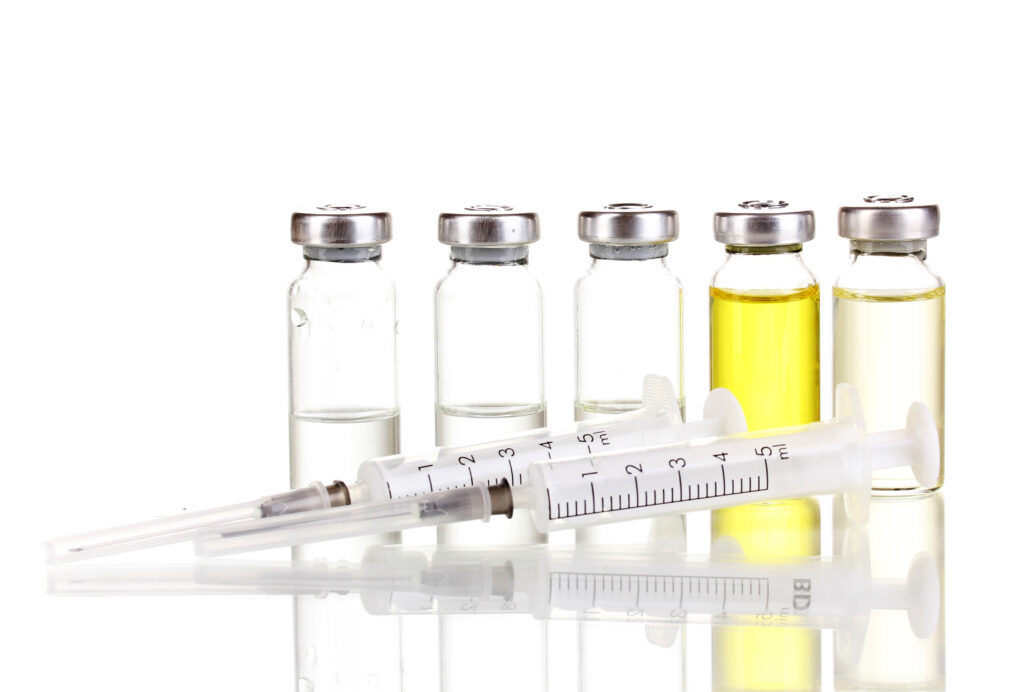
4.Exploring the Safety Aspects of Fat Loss Injections:
The safety of fat loss injections can vary depending on the specific type of injection, the individual’s health status, and how the injections are administered. It’s essential to emphasize that any medical procedure or intervention carries potential risks and benefits, and fat loss injections are no exception.
5.Duration of Effectiveness for Fat Loss Injections:
The duration of effectiveness for fat loss injections can vary depending on the type of injection and individual factors. Here are a few examples:
- Deoxycholic Acid Injections (e.g., Kybele): The results of deoxycholic acid injections for submental fat reduction can be long-lasting. Typically, once the desired outcome is achieved, retreatment may not be necessary.
- Lipotropic Injections: The effects of lipotropic injections, which often contain a combination of vitamins, amino acids, and other nutrients, may vary. Some individuals may choose to have regular injections for ongoing support, while others may achieve lasting results with a limited course of injections.
- HCG Injections: HCG injections, when used for weight loss, are often administered in cycles. The duration of each cycle can vary, but it is typically not a long-term solution. Prolonged or repeated use of HCG injections for weight loss is controversial and not supported by mainstream medical guidelines.
- Liraglutide Injections: The use of liraglutide for weight loss is often prescribed for a specific duration, and its effectiveness may be maintained as long as the medication is continued. Discontinuing liraglutide may lead to weight regain.
- Peptide Injections: The duration of effectiveness for peptides can vary depending on the specific peptide used. Some may require regular administration for ongoing benefits, while others may provide longer-lasting effects.
It’s important to note that individual responses to fat loss injections can differ, and the longevity of results may depend on factors such as lifestyle, diet, and overall health. Additionally, advancements in medical research may lead to new formulations with extended durations of effectiveness. Always consult with a healthcare professional to determine the most appropriate approach based on individual needs and health goals.
6.How much fat can individual lose with injections:
I am not a medical professional, but I can provide some general information. It’s important to consult with a qualified healthcare professional for personalized advice.
Fat loss injections can refer to various treatments, and their effectiveness can vary based on the specific procedure or substance used. Lipolytic injections, such as those containing phosphatidylcholine and deoxycholic acid, are sometimes used for localized fat reduction. These injections aim to break down fat cells, leading to a reduction in the targeted area.
The amount of fat that can be lost with injections depends on factors such as the individual’s overall health, the specific treatment used, the targeted area, and the number of sessions. Additionally, it’s crucial to note that these procedures are typically not a substitute for a healthy diet and regular exercise.
Invasive procedures like liposuction may provide more noticeable fat reduction, but they also involve higher risks and a longer recovery period. Non-invasive methods often have more modest results.
7.Does fat return after fat-dissolving injections:
The potential for fat to return after fat-dissolving injections can depend on various factors, including the specific type of injection, individual metabolism, lifestyle, and adherence to healthy habits.
In some cases, fat-dissolving injections work by disrupting or breaking down fat cells in the targeted area. While the destroyed fat cells are typically removed from the body through natural processes, it doesn’t mean new fat cells can’t form in the same area if there is a significant weight gain. Maintaining a healthy diet and regular exercise routine can help prevent the accumulation of new fat.
It’s essential to have realistic expectations about the results of fat-dissolving injections. These treatments may provide a reduction in localized fat, but they are not a permanent solution. Lifestyle factors such as diet, exercise, and overall health will play a crucial role in the long-term outcome.

8.Do fat injections work in the belly:
Fat injections, also known as fat grafting or fat transfer, involve transferring fat from one part of the body to another. This procedure is commonly used for various cosmetic purposes, including enhancing the volume and contour of specific areas.
When it comes to the belly, fat injections can be used to address volume loss, improve contours, and achieve a more aesthetically pleasing appearance. The procedure typically involves harvesting fat from donor areas (such as thighs or buttocks) through liposuction, processing the fat, and then injecting it into the targeted area, in this case, the belly.
However, it’s important to note that the success and longevity of fat injections in the belly can vary. Factors such as the technique used, the patient’s individual characteristics, and how well the transplanted fat integrates into the surrounding tissues all play a role.
Additionally, the body naturally absorbs some of the transplanted fat over time. Therefore, multiple sessions may be needed to achieve the desired result, and maintenance procedures may be necessary to address any potential volume loss.
9.How quickly do fat injections work:
The results of fat injections, also known as fat grafting or fat transfer, may not be immediately apparent. In the initial days and weeks following the procedure, some swelling and bruising are common, and this can temporarily affect the appearance of the treated area.
Over time, the transplanted fat cells need to establish a blood supply in their new location and integrate with the surrounding tissues. This process, known as vascularization, takes time, and patients typically start to see more stable and noticeable results after a few weeks to a few months.
It’s essential to understand that some of the initially transferred fat may be reabsorbed by the body, and this can contribute to the need for multiple sessions to achieve the desired level of augmentation or improvement. The rate of fat retention can vary between individuals, and factors such as the injection technique, the patient’s overall health, and post-procedure care can influence the outcome.
10.Do weight loss injections last:
Weight loss injections can refer to various treatments, and their efficacy and longevity can vary. It’s crucial to understand that there is no one-size-fits-all solution, and the effectiveness of weight loss injections depends on factors such as the specific type of injection, individual response, lifestyle, and overall health.
Some common types of weight loss injections include:
- B12 Injections: These injections often contain vitamin B12, which plays a role in metabolism. While B12 deficiency can affect energy levels, simply receiving B12 injections may not lead to significant weight loss on its own.
- Lipotropic Injections: These injections may contain compounds such as methionine, inositol, and choline, which are believed to aid in fat metabolism. However, scientific evidence supporting their effectiveness for weight loss is limited.
- HCG (Human Chorionic Gonadotropin) Injections: HCG injections are sometimes used in conjunction with a very low-calorie diet. The FDA has not approved HCG for weight loss, and the efficacy and safety of this approach are controversial.
- Saxenda (Liraglutide) Injections: Saxenda is an FDA-approved medication for weight loss that works by mimicking a naturally occurring hormone called GLP-1. It can help reduce appetite and increase feelings of fullness.
It’s important to note that sustainable and healthy weight loss is best achieved through a combination of a balanced diet, regular exercise, and lifestyle changes. Weight loss injections alone are unlikely to provide long-term results.

11.What can I eat after fat-dissolving injections:
After fat-dissolving injections, it’s generally advisable to follow any specific post-procedure instructions provided by your healthcare provider. However, here are some general guidelines that may help:
- Hydration: Drink plenty of water to stay hydrated. Proper hydration is essential for overall health and can aid in the recovery process.
- Nutrient-Rich Foods: Focus on consuming nutrient-dense foods that support healing and overall well-being. Include a variety of fruits, vegetables, lean proteins, whole grains, and healthy fats in your diet.
- Avoid Processed Foods: Minimize the intake of processed and high-sodium foods, as they can contribute to water retention and may not support optimal recovery.
- Protein Intake: Adequate protein is crucial for tissue repair and recovery. Include sources of lean protein such as chicken, fish, tofu, beans, and low-fat dairy in your meals.
- Anti-Inflammatory Foods: Include foods with anti-inflammatory properties, such as fatty fish (like salmon and mackerel), nuts, seeds, and fruits rich in antioxidants (like berries).
- Limit Alcohol and Caffeine: Consider limiting alcohol and caffeine consumption, as these substances can sometimes contribute to dehydration and may affect the recovery process.
- Follow Dietary Restrictions, if any: Your healthcare provider may provide specific dietary guidelines or restrictions based on the type of fat-dissolving injection you’ve received. Follow these instructions carefully.
12.Who should not get fat dissolving:
Fat-dissolving treatments, such as injections that aim to reduce localized fat deposits, may not be suitable for everyone. It’s essential to consult with a qualified healthcare professional or a licensed aesthetic practitioner to determine whether these procedures are appropriate for you. However, here are some general considerations and contraindications for fat-dissolving treatments:
- Pregnancy and Breastfeeding: Fat-dissolving injections are typically not recommended for individuals who are pregnant or breastfeeding, as the safety of these procedures in such situations has not been well-established.
- Allergies or Sensitivities: Individuals with known allergies or sensitivities to the ingredients used in fat-dissolving injections should avoid these treatments.
- Certain Medical Conditions: People with certain medical conditions, such as liver or kidney disease, blood clotting disorders, or a history of severe allergic reactions, may not be suitable candidates for fat-dissolving treatments. These conditions could increase the risk of complications.
- Infections at the Treatment Site: If there is an existing infection at the intended treatment site, it may be advisable to delay the procedure until the infection has resolved.
- Unrealistic Expectations: Individuals with unrealistic expectations about the outcomes of fat-dissolving treatments may not be suitable candidates. It’s essential to have a clear understanding of the potential results and limitations of these procedures.
- Poor Overall Health: People in poor overall health or those with chronic medical conditions may not be ideal candidates for invasive or non-invasive cosmetic procedures. A thorough health assessment by a healthcare professional is necessary to determine suitability.
- Recent Surgeries or Procedures: If you have recently undergone other cosmetic procedures or surgeries, your healthcare provider may recommend waiting until you have fully recovered before considering fat-dissolving treatments.
- Medication Interactions: Some medications may interact with fat-dissolving treatments, affecting their safety and efficacy. It’s crucial to inform your healthcare provider about any medications, supplements, or herbal remedies you are taking.
13.Does 3 months injection make you lose weight:
The effectiveness of any injection, including those claimed to assist with weight loss, can vary widely. It’s important to note that quick fixes for weight loss are often not sustainable or healthy in the long term. If you’re considering a “3-month injection” for weight loss, it’s crucial to understand what specific substance or medication is being referred to and to approach such interventions with caution.
Some injections or treatments marketed for weight loss may contain substances like vitamins, amino acids, or hormones. However, the safety and efficacy of these treatments can be questionable, and not all weight loss injections are supported by scientific evidence.
If the injection you’re referring to is a prescription medication, it’s crucial to consult with a qualified healthcare professional before starting any treatment. Only certain medications approved by regulatory agencies, such as the U.S. Food and Drug Administration (FDA), are recognized for weight loss, and their use should be supervised by a healthcare provider.
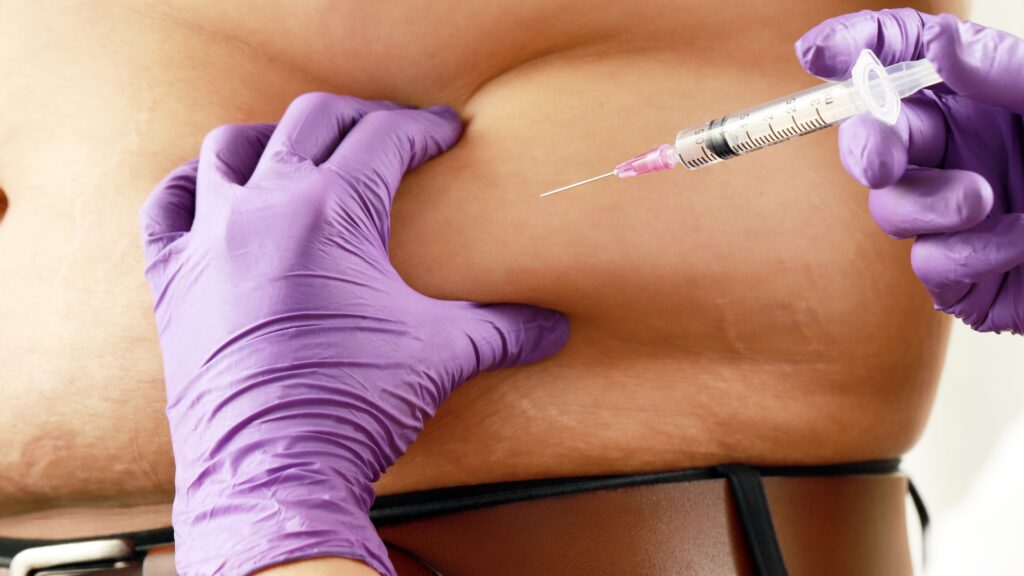
14.What not to do after fat-dissolving injections:
After fat-dissolving injections, it’s important to follow any specific post-procedure instructions provided by your healthcare provider. While these instructions may vary based on the specific type of fat-dissolving treatment you’ve received, here are some general guidelines:
- Avoid Massaging the Treated Area: In some cases, massaging the treated area can disperse the injected solution and affect the desired outcome. Follow your healthcare provider’s advice regarding whether or not to massage the treated area.
- Limit Strenuous Exercise: While light physical activity is often encouraged to promote blood circulation and reduce the risk of blood clots, it’s usually advisable to avoid strenuous exercise for a certain period after the procedure. Follow your healthcare provider’s recommendations regarding the timing and intensity of exercise.
- Avoid Hot Baths or Saunas: Heat can increase blood flow and potentially affect the distribution of the injected solution. Avoid hot baths, saunas, and other heat sources for the specified period recommended by your healthcare provider.
- Minimize Sun Exposure: Direct sunlight and UV rays can irritate the treated area. It’s advisable to minimize sun exposure and use sunscreen if you need to go outside. Follow your healthcare provider’s recommendations regarding sun protection.
- Limit Alcohol Consumption: Alcohol can potentially increase the risk of bruising and swelling. It may be advisable to limit alcohol consumption for a certain period after the procedure.
- Adhere to Dietary Guidelines: Your healthcare provider may provide specific dietary guidelines or restrictions. Follow these instructions carefully to support the healing process.
- Avoid Smoking: Smoking can impact blood circulation and may interfere with the healing process. If you smoke, your healthcare provider may recommend avoiding smoking for a specified period after the procedure.
- Follow Up with Post-Procedure Appointments: Attend any scheduled follow-up appointments with your healthcare provider. These appointments are essential for monitoring your progress, addressing any concerns, and determining whether additional treatments are needed.
Always communicate openly with your doctor about any concerns or questions you may have after fat-dissolving injections. Following their guidance is crucial for achieving optimal results and minimizing potential risks or complications.
15.Is fat dissolving injections permanent:
The permanence of fat-dissolving injections can vary depending on the specific type of injection, individual factors, and lifestyle. It’s important to note that while these injections may reduce the volume of fat cells in the treated area, they do not prevent the potential formation of new fat cells in the future.
Common fat-dissolving injections involve substances that break down or emulsify fat cells, leading to their elimination from the body. However, the long-term effectiveness can be influenced by factors such as:
- Lifestyle Habits: Healthy eating habits and regular exercise play a significant role in maintaining results. Without a healthy lifestyle, new fat cells may accumulate over time.
- Weight Fluctuations: Significant weight fluctuations can impact the results of fat-dissolving injections. Maintaining a stable weight after the procedure can help preserve the outcomes.
- Metabolism and Genetics: Individual variations in metabolism and genetic factors can affect how the body responds to fat-dissolving treatments.
- Follow-up Treatments: Some individuals may require multiple sessions of fat-dissolving injections to achieve the desired results. Follow-up treatments may be recommended for optimal outcomes.
It’s essential to have realistic expectations and discuss the potential longevity of results with your healthcare provider during the consultation. Fat-dissolving injections are often considered semi-permanent, and maintenance treatments may be needed to sustain the effects over time.
16.Does skin saggy after fat-dissolving injections:
The potential for saggy skin after fat-dissolving injections can depend on various factors, including the type of injection, the amount of fat removed, and individual skin elasticity.
In some cases, fat-dissolving injections are designed to target localized pockets of fat and may lead to a reduction in fat volume in the treated area. However, the impact on skin elasticity can vary. Here are some considerations:
- Skin Elasticity: If the skin has good elasticity, it may retract well after fat reduction, minimizing the likelihood of saggy skin. Younger individuals often have more elastic skin compared to older individuals.
- Volume of Fat Removed: The amount of fat removed and the rate at which it occurs can affect how the skin responds. Rapid or significant fat reduction may increase the risk of saggy skin.
- Combination with Skin-Tightening Procedures: In some cases, healthcare providers may recommend combining fat-dissolving injections with skin-tightening procedures to enhance the overall result and address any potential issues with skin laxity.
- Patient’s Individual Characteristics: Each person’s skin and body respond differently to treatments. Factors such as genetics, overall health, and lifestyle habits can influence the outcome.
It’s important to note that fat-dissolving injections are not a one-size-fits-all solution, and the risk of saggy skin can vary from person to person.
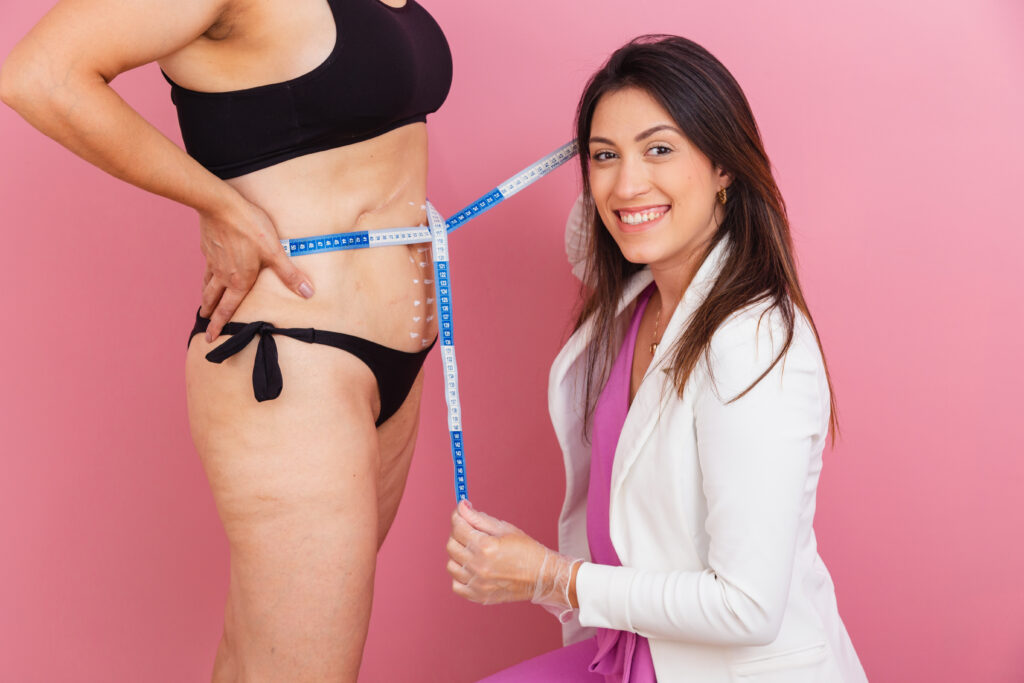
17. How do actresses lose weight fast:
Actresses, like many individuals in the public eye, often face pressure to meet certain aesthetic standards, including maintaining a certain weight or body shape for roles or appearances. It’s important to approach the topic of weight loss with a focus on health and well-being rather than solely on rapid results. Here are some general practices that some people, including actresses, may use to achieve weight loss:
- Professional Guidance: Many actresses work with nutritionists, personal trainers, and other health professionals to create personalized and sustainable plans for weight management. These professionals can provide guidance on healthy eating, exercise routines, and overall lifestyle habits.
- Balanced Diet: Adopting a balanced and nutritious diet is crucial for both health and weight management. This often involves consuming a variety of whole foods, including fruits, vegetables, lean proteins, and whole grains, while minimizing processed and high-calorie foods.
- Regular Exercise: Incorporating regular physical activity is essential for maintaining a healthy weight. Actresses may engage in a mix of cardiovascular exercises, strength training, and flexibility workouts to support their overall fitness.
- Portion Control: Controlling portion sizes can help regulate caloric intake. Being mindful of portion sizes and eating in moderation can contribute to weight management.
- Hydration: Drinking an adequate amount of water is important for overall health and can also contribute to a feeling of fullness, potentially reducing the likelihood of overeating.
- Stress Management: Stress can affect both physical and mental well-being. Some individuals, including actresses, may focus on stress management techniques such as meditation, yoga, or other relaxation methods to support their overall health.
It’s crucial to note that rapid or extreme weight loss methods, such as crash diets or excessive exercise, can have negative health consequences and are often unsustainable. Moreover, the pressure to conform to certain body standards in the entertainment industry can contribute to unhealthy practices. Everyone’s body is different, and what works for one person may not work for another.
If you are considering making changes to your diet or exercise routine, it’s advisable to consult with healthcare professionals such as a registered dietitian or a fitness trainer who can provide personalized advice based on your individual needs and goals. Additionally, prioritizing overall health and well-being over unrealistic aesthetic standards is essential for long-term success and happiness.
18.What do I need to know before receiving fat-dissolving injections:
Before receiving fat-dissolving injections, it’s crucial to gather comprehensive information, have realistic expectations, and consult with a qualified healthcare professional. Here are key considerations:
- Consultation with a Qualified Doctor:
- Schedule a consultation with a licensed and experienced healthcare professional or aesthetic practitioner.
- Discuss your medical history, current health status, and any medications or supplements you are taking.
- Ensure you inform them about any allergies or sensitivities.
- Understanding the Procedure:
- Gain a clear understanding of the specific type of fat-dissolving injection being recommended.
- Discuss how the procedure works, potential benefits, and any associated risks or side effects.
- Realistic Expectations:
- Have realistic expectations about the outcomes. Fat-dissolving injections can offer improvement, but they may not provide drastic or immediate results.
- Understand that multiple sessions may be required for optimal results.
- Potential Risks and Side Effects:
- Be aware of potential risks and side effects associated with the specific fat-dissolving injection. These may include swelling, bruising, redness, and discomfort.
- Discuss how long any side effects are expected to last and how they can be managed.
- Recovery and Downtime:
- Inquire about the expected recovery period and any limitations on activities, such as exercise or sun exposure.
- Understand post-procedure care instructions provided by your healthcare provider.
- Cost and Maintenance:
- Discuss the cost of the procedure, including any additional sessions that may be necessary for optimal results.
- Clarify the maintenance requirements and whether follow-up treatments are recommended.
- Alternatives and Complementary Treatments:
- Explore alternative treatments or complementary procedures that may enhance the overall outcome.
- Understand the limitations of fat-dissolving injections compared to other cosmetic procedures.
- Qualifications of the Provider:
- Ensure that the healthcare professional performing the procedure is licensed, experienced, and trained in administering fat-dissolving injections.
- Ask for before-and-after photos of previous patients to assess the provider’s expertise.
- Medical Clearance:
- Obtain medical clearance from your primary healthcare provider if you have underlying health conditions.
19.Is Fat Loss Injection Procedre Painful:
The level of pain experienced during a fat loss injection procedure can vary from person to person and depends on factors such as individual pain tolerance, the specific injection technique used, and the type of solution being injected. Here are some general considerations:
- Discomfort at the Injection Site:
- Patients commonly report feeling some discomfort, stinging, or burning at the injection site. The sensation is often temporary and subsides relatively quickly.
- Topical Anesthetics:
- Some healthcare providers may apply a topical anesthetic to the treatment area before the injection to minimize discomfort. This can help numb the skin and make the procedure more tolerable.
- Cold Packs:
- Cold packs may be applied before or after the injection to help reduce pain and swelling.
- Depth and Technique:
- The depth of the injection and the specific technique used by the healthcare provider can influence the level of pain. In some cases, injections may be performed using very fine needles to minimize discomfort.
- Patient Comfort Measures:
- Communicate with your healthcare provider about any concerns regarding pain or discomfort. They may adjust their technique, provide additional numbing agents, or offer other comfort measures.
- Post-Procedure Discomfort:
- Some patients may experience mild soreness, bruising, or swelling after the procedure. These symptoms are usually temporary and can be managed with appropriate post-procedure care.
It’s important to note that pain is subjective, and individuals may have different experiences. If you are considering a fat loss injection procedure and are concerned about pain, discuss your apprehensions with your healthcare provider during the consultation. They can provide information about the specific procedure, potential discomfort, and any measures they take to ensure patient comfort.
Always choose a qualified and experienced doctor professional for any cosmetic procedure, and follow their pre and post-procedure instructions carefully to optimize your experience and outcomes.
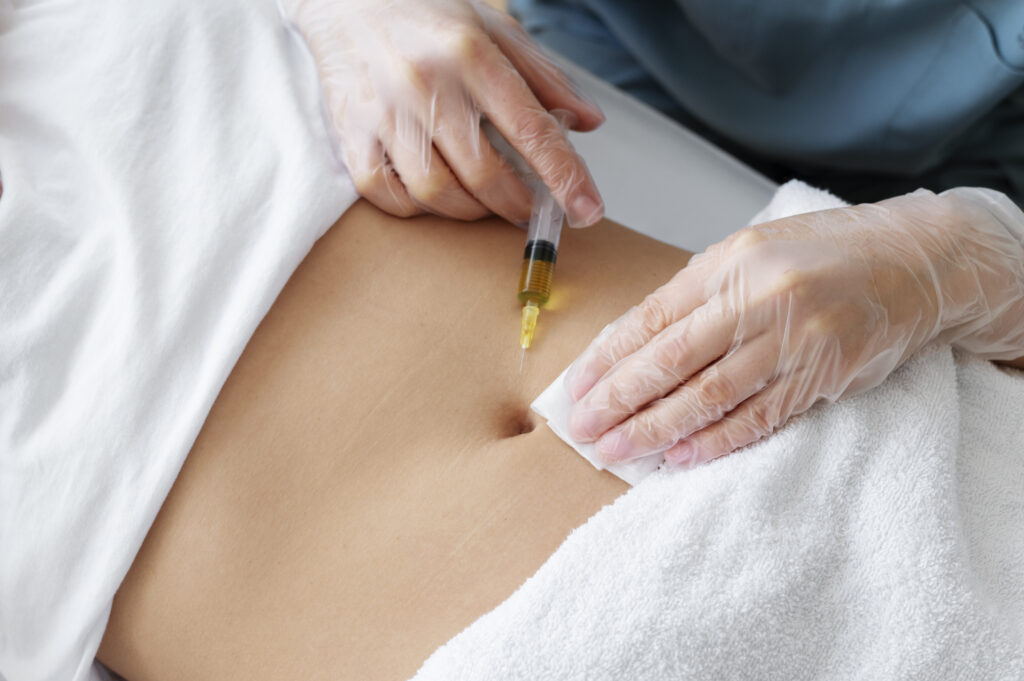
20. Cost of weight loss injections:
The cost of weight loss injections can vary widely depending on several factors, including the type of injection, the location of the clinic, the expertise of the healthcare provider, and the number of sessions required. Additionally, some weight loss injections may be prescription medications that require a healthcare professional’s supervision.
Here are some general considerations:
- B12 Injections and Lipotropic Injections:
- These injections may contain vitamins and amino acids and are sometimes offered at wellness clinics or weight loss centers. Costs can range from $20 to $100 per injection, and multiple sessions may be recommended.
- HCG Injections:
- HCG (Human Chorionic Gonadotropin) injections are sometimes used in conjunction with a very low-calorie diet. Costs can vary, and the injections may be administered as part of a comprehensive weight loss program. The overall cost may include consultation fees, medications, and follow-up appointments.
- Saxenda (Liraglutide) Injections:
- Saxenda is an FDA-approved medication for weight loss and is available by prescription. The cost can vary based on factors such as dosage, the duration of treatment, and insurance coverage. Patients may also incur additional costs for medical consultations.
It’s important to note that while these injections may be available, their safety and effectiveness can vary, and not all weight loss injections are supported by robust scientific evidence. Before considering any weight loss injections, it’s advisable to consult with a qualified healthcare professional who can assess your individual needs, provide information about potential risks and benefits, and guide you on the most appropriate approach for your weight loss goals.
Additionally, be cautious about unregulated or unauthorized providers and ensure that any injections are administered under the supervision of a licensed healthcare professional. Always prioritize your health and well-being when exploring weight loss options.
21.Possible side effects of weight loss injections:
The side effects of weight loss injections can vary depending on the specific type of injection and the substances involved. It’s important to note that while some weight loss injections may be available, their safety and efficacy can vary, and not all are supported by robust scientific evidence. Here are potential side effects associated with different types of weight loss injections:
- B12 Injections and Lipotropic Injections:
- Common side effects may include pain, redness, or swelling at the injection site.
- Allergic reactions to components in the injections can occur, leading to symptoms such as itching, rash, or difficulty breathing.
- HCG Injections:
- Common side effects may include headaches, fatigue, irritability, and water retention.
- Some people may experience mood swings or depression.
- There is controversy and debate regarding the safety and efficacy of HCG injections for weight loss.
- Saxenda (Liraglutide) Injections:
- Common side effects may include nausea, vomiting, diarrhea, and constipation.
- Injection site reactions, such as redness or itching, are possible.
- Serious side effects can include pancreatitis and kidney problems.
Additionally, be cautious about unregulated providers and treatments that lack scientific support or FDA approval. Always prioritize your health and well-being, and explore weight loss options that are evidence-based, sustainable, and tailored to your individual needs. If you experience any unexpected or severe side effects, seek immediate medical attention.
22.Beneficts of Fat Loss Injection:
Fat loss injections, often known as fat-dissolving injections or lipolytic injections, may offer certain benefits for individuals seeking localized fat reduction. It’s essential to note that the effectiveness and safety of these injections can vary depending on the specific type of injection, individual factors, and the expertise of the healthcare provider administering the treatment. Here are potential benefits associated with fat loss injections:
- Localized Fat Reduction:
- Fat loss injections are designed to target and reduce specific areas of localized fat deposits, such as the abdomen, thighs, or double chin.
- Non-Invasive or Minimally Invasive:
- Many fat-dissolving injections are non-invasive or minimally invasive compared to surgical procedures like liposuction. This can result in less downtime and a quicker recovery.
- Improved Body Contouring:
- Fat loss injections aim to improve body contours by reducing excess fat in targeted areas, leading to a more sculpted and proportionate appearance.
- Enhanced Appearance:
- Individuals may experience an improvement in their overall appearance and self-esteem as a result of reduced fat in specific areas.
- Potential Skin Tightening:
- In some cases, fat loss injections may stimulate collagen production, contributing to improved skin tightness in the treated area.
- Quick Procedure:
- The injections are typically quick to administer, and patients can often resume their regular activities shortly after the procedure.
- Personalized Treatment Plans:
- Fat loss injections can be part of a personalized treatment plan, and healthcare providers may tailor the approach based on individual needs and goals.
It’s important to approach fat loss injections with realistic expectations, as results can vary among individuals. Additionally, these injections are not a substitute for a healthy lifestyle, including a balanced diet and regular exercise.

23.Newest weight loss injection for 2024:
As per latest update in January 2022, I don’t have information on developments or specific products introduced in 2024. Additionally, the landscape of weight loss injections is dynamic, with new products and treatments occasionally emerging.
24.Can massage be done after fat dissolving:
Whether or not to massage the treated area after fat-dissolving injections depends on the specific instructions provided by your doctor. Different practitioners may have varying protocols, and the recommended post-treatment care can depend on the type of injection, the technique used, and the desired outcomes.
In some cases, doctors may recommend massaging the treated area to help distribute the injected solution and optimize its effects. However, in other situations, massaging may be discouraged to avoid potential complications or unintended effects.
Here are general considerations:
- Follow Healthcare Provider’s Advice:
- Always follow the specific post-treatment instructions provided by your healthcare provider. They are tailored to the type of injection and your individual circumstances.
- Timing and Technique:
- If your provider recommends massage, they will likely provide guidance on when to start and how to perform it. Use gentle motions and avoid excessive pressure.
- Avoid Self-Directed Actions:
- Do not attempt to massage the treated area without explicit instructions from your healthcare provider. Unsupervised or self-directed actions may lead to undesired effects.
- Communicate with Your Provider:
- If you have questions or concerns about post-treatment care, including whether to massage the treated area, contact your healthcare provider for clarification.
- Watch for Adverse Reactions:
- Be vigilant for any signs of adverse reactions, such as increased swelling, redness, or discomfort. If you experience unusual symptoms, contact your healthcare provider promptly.
25.Can fat dissolving go wrong:
Yes, like any medical procedure, fat-dissolving injections can have potential risks and complications, and things can go wrong. It’s crucial to understand the potential drawbacks and be aware of the factors that may contribute to adverse outcomes. Here are some considerations:
- Infection:
- Any injection carries a risk of infection. If proper hygiene and sterile techniques are not followed during the procedure, it can lead to localized or systemic infections.
- Allergic Reactions:
- Some individuals may have allergic reactions to the substances used in fat-dissolving injections. This can result in redness, swelling, itching, or more severe reactions.
- Uneven Results:
- In some cases, the distribution of the injected solution may be uneven, leading to asymmetrical or irregular results.
- Nodule Formation:
- In some cases, nodules or lumps may develop under the skin at the injection site. This can affect the smoothness of the treated area.
- Skin Irregularities:
- The skin may react unpredictably, leading to irregularities, dimpling, or textural changes in the treated area.
- Excessive Fat Removal:
- If the procedure involves the removal of too much fat, it may lead to an unnatural or hollow appearance in the treated area.
- Persistent Swelling or Bruising:
- Prolonged swelling or bruising beyond the expected recovery period can occur in some cases.
- Skin Necrosis:
- In rare cases, the injected solution may affect blood vessels, leading to skin necrosis (death of skin tissue).
- Inadequate Results:
- The desired results may not be achieved, or the effect may be temporary, necessitating additional sessions.
- Patient Dissatisfaction:
- Even with successful procedures, individual expectations may not align with the outcomes, leading to patient dissatisfaction.

Frequently Asked Questions About Fat Loss Injections:
- What are fat loss injections?
- Fat loss injections are medications or substances administered through injections to aid in the reduction of body fat.
- How do fat loss injections work?
- Fat loss injections work by enhancing metabolism, suppressing appetite, or targeting fat cells directly.
- Are fat loss injections safe?
- Safety depends on the specific injection and individual health; consult a healthcare professional for personalized advice.
- What types of fat loss injections are available?
- Common types include lipotropic injections, hCG injections, and peptide injections for fat loss.
- Do fat loss injections replace a healthy diet and exercise?
- No, fat loss injections are typically used as supplements and should be combined with a balanced diet and regular exercise for optimal results.
- Are fat loss injections suitable for everyone?
- Not all individuals are suitable candidates; consult a healthcare provider to determine eligibility based on medical history and conditions.
- What are potential side effects of fat loss injections?
- Side effects may include nausea, headache, or injection site reactions; consult a healthcare professional for guidance.
- How soon can one see results with fat loss injections?
- Results vary, but changes may be noticed within a few weeks when used in conjunction with a healthy lifestyle.
- Can fat loss injections be self-administered?
- Some injections may be self-administered, but proper training and guidance from a healthcare professional are crucial.
- Are fat loss injections a long-term solution?
- Long-term effectiveness depends on lifestyle choices; sustainable results require a commitment to healthy habits.
Conclusion:
In summary, fat loss injections present a refined solution to weight management, offering potential benefits but requiring careful consideration. While these injections can enhance metabolic processes, suppress appetite, and target fat cells, their efficacy is most significant when integrated into a comprehensive approach that includes a balanced diet and regular exercise.
However, caution is paramount. Safety concerns, potential side effects, and the need for professional guidance underscore the importance of consulting healthcare experts before embarking on any fat loss injection regimen. Notably, fat loss injections should not be viewed as standalone solutions but rather as tools to complement a broader commitment to a healthy lifestyle.
It’s crucial to acknowledge that individual responses vary, and what works for one may not suit another. Moreover, sustainable weight management demands consistent efforts beyond any quick fixes. Therefore, a realistic and holistic perspective on fat loss injections involves viewing them as part of a larger strategy, rather than a panacea.
In conclusion, while fat loss injections can play a role in achieving weight loss goals, their integration should be thoughtful, informed, and personalized. Always prioritize your health and well-being, seeking professional advice to determine the most suitable path for your unique circumstances. Ultimately, the key to successful and sustainable weight management lies in a comprehensive lifestyle approach that encompasses diet, exercise, and any supplementary measures within the bounds of safety and informed decision-making.
Blog
Laser Hair Removal Bahria Town Phase 7 Rawalpindi
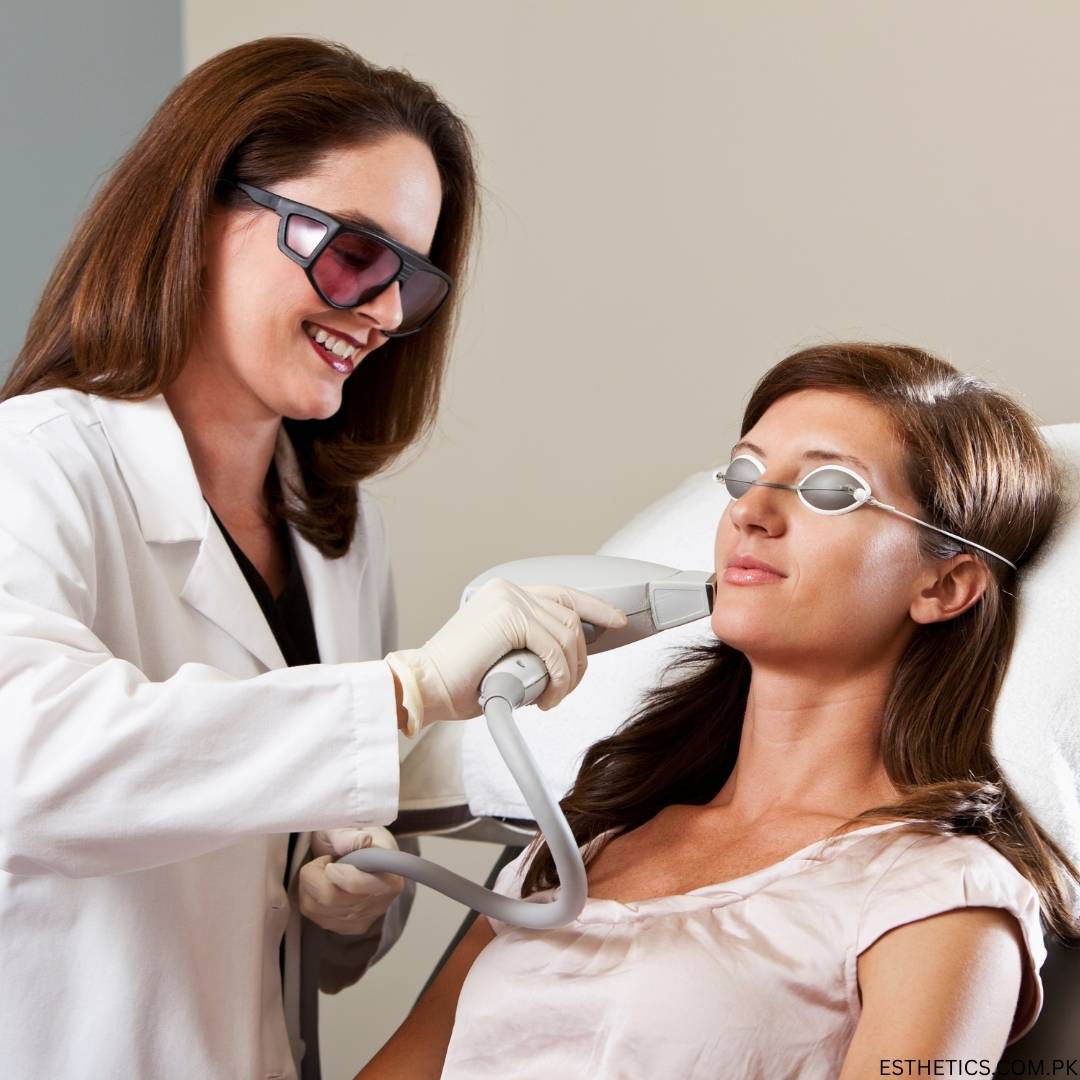
Introduction
In today’s fast-paced lifestyle, many men and women are tired of dealing with unwanted hair through temporary methods such as waxing, shaving, threading, or using depilatory creams. These methods not only take time but also cause side effects like skin irritation, ingrown hairs, and rapid regrowth.
This is where laser hair removal comes as a modern, safe, and long-lasting solution. If you are living in Bahria Town Phase 7 Rawalpindi, you now have access to advanced technology and experienced dermatologists right at your doorstep.
This detailed guide will cover everything you need to know about laser hair removal in Bahria Town Phase 7—from how it works, benefits, and number of sessions required, to the cost estimate for different body areas. By the end, we’ll also guide you to Aesthedoc Clinic, one of the top destinations for safe and effective laser hair removal.
What is Laser Hair Removal?
Laser hair removal is a medical aesthetic procedure that uses highly concentrated light beams to target hair follicles. The pigment (melanin) in the hair absorbs the laser energy, which destroys the follicle and reduces future growth.
It is considered one of the most effective methods for permanent hair reduction. Unlike waxing or shaving, which only remove surface hair, laser treatment targets the root of the problem—the follicle.
How Does It Work?
The procedure is simple and usually involves the following steps:
- Consultation & Skin Analysis – Your skin type and hair texture are assessed by a dermatologist.
- Preparation – The treatment area is shaved before the procedure to allow the laser to penetrate better.
- Laser Application – A handheld device delivers light pulses to the hair follicles. Cooling technology keeps the skin comfortable.
- Post-Treatment Care – Sunscreen and soothing gels are applied. You are advised to avoid sun exposure for a few days.
Why Laser Hair Removal is Popular in Bahria Town Phase 7 Rawalpindi
Bahria Town Phase 7 is one of the most modern and well-developed areas of Rawalpindi, home to a large community that values convenience, advanced lifestyle, and self-care. Residents here prefer treatments that are time-saving, effective, and reliable.
Laser hair removal fits perfectly into this lifestyle because it:
- Reduces salon visits.
- Offers long-term results with minimal maintenance.
- Provides smooth, flawless skin that boosts confidence.
Benefits of Laser Hair Removal
Laser hair removal has multiple advantages over traditional methods. Let’s look at them in detail:
- Permanent Hair Reduction – Up to 90% reduction after multiple sessions.
- No More Waxing Pain – Say goodbye to painful waxing strips and razor burns.
- Safe for All Areas – Can be performed on face, underarms, arms, legs, bikini, back, and chest.
- Quick & Convenient – Small areas like upper lip take just 5 minutes.
- Cost-Effective – Though the upfront cost seems high, it saves money spent on lifelong waxing/shaving.
- No Ingrown Hairs – Prevents bumps and skin irritation caused by other methods.
- Boosted Confidence – Smooth skin helps you feel confident in your everyday and professional life.
Who Can Get Laser Hair Removal?
Laser hair removal is suitable for both men and women. It works best for individuals with:
- Dark, coarse hair and light skin (though modern lasers also work on darker skin tones).
- Unwanted hair on the face, underarms, arms, legs, bikini, chest, or back.
- Busy lifestyles with no time for repeated waxing or shaving.
- Skin prone to ingrown hairs or razor bumps.
❌ However, it is not recommended for:
- Pregnant women.
- People with certain skin disorders or infections.
- Those with very light blonde, grey, or white hair (less melanin = less effectiveness).
How Many Sessions Are Required?
Laser hair removal usually requires 6–8 sessions for the best results.
- Face & small areas: 4–6 sessions.
- Arms & legs: 6–8 sessions.
- Back & chest (men): 8–10 sessions.
Sessions are spaced 4–6 weeks apart, depending on the hair growth cycle.
Side Effects & Safety
When done under professional supervision, laser hair removal is safe and FDA-approved. Some mild side effects may include:
- Redness or slight swelling (subsides in a few hours).
- Temporary skin sensitivity.
These are completely normal and can be managed with aftercare instructions provided by your dermatologist.
Estimated Prices of Laser Hair Removal in Bahria Town Phase 7 Rawalpindi
Prices vary depending on the size of the treatment area, number of sessions, and technology used. Here’s an estimated price range:
| Body Area | Estimated Price Per Session (PKR) | Package (6 Sessions) |
|---|---|---|
| Upper Lip | 2,500 – 3,500 | 12,000 – 15,000 |
| Chin | 3,000 – 4,500 | 15,000 – 18,000 |
| Full Face | 8,000 – 10,000 | 40,000 – 50,000 |
| Underarms | 4,000 – 5,000 | 20,000 – 25,000 |
| Full Arms | 10,000 – 12,000 | 50,000 – 60,000 |
| Full Legs | 15,000 – 18,000 | 75,000 – 90,000 |
| Bikini Line | 7,000 – 9,000 | 35,000 – 45,000 |
| Chest (Men) | 12,000 – 15,000 | 60,000 – 75,000 |
| Back (Men) | 15,000 – 18,000 | 75,000 – 90,000 |
| Full Body (Men/Women) | 35,000 – 45,000 | 180,000 – 220,000 |
💡 Tip: Prices may differ slightly depending on hair thickness and number of sessions required. Always book a consultation for an exact quote.
Preparing for Your Laser Session
To get the best results, follow these preparation steps:
- Avoid waxing, plucking, or threading 4 weeks before treatment.
- Shave the area 24 hours before the session.
- Avoid tanning and direct sunlight.
- Inform your doctor about any medications you are taking.
Aftercare Tips
Post-treatment care is important to protect your skin:
- Apply sunscreen regularly.
- Avoid hot showers or saunas for 24 hours.
- Use soothing creams or aloe vera gel.
- Do not scratch or pick treated areas.
FAQs About Laser Hair Removal in Bahria Town Phase 7 Rawalpindi
Q1: Is laser hair removal painful?
➡ Modern machines with cooling systems make it almost painless, with only a slight tingling sensation.
Q2: How long does each session take?
➡ Small areas like upper lip take 5–10 minutes, while full body can take 1.5–2 hours.
Q3: Can men also get laser hair removal?
➡ Yes, many men opt for chest, back, shoulders, and beard shaping.
Q4: Is laser hair removal permanent?
➡ It offers permanent hair reduction (up to 90%). Some fine regrowth may appear, requiring maintenance once or twice a year.
Q5: Which clinic is best for laser hair removal in Bahria Town Phase 7?
➡ Aesthedoc Clinic is one of the top choices, offering safe and affordable treatments with advanced technology.
Why Choose Aesthedoc Clinic in Bahria Town Phase 7 Rawalpindi?
When it comes to your skin, you deserve nothing but the best. Aesthedoc Clinic offers:
- 🩺 Experienced dermatologists & certified technicians.
- FDA-approved machines with cooling technology.
- Personalized treatment plans.
- A hygienic, comfortable, and professional environment.
- Affordable packages for multiple areas.
Whether you want to treat a small area or go for full-body laser, Aesthedoc ensures safe, effective, and long-lasting results.
Final Thoughts
If you are searching for laser hair removal in Bahria Town Phase 7 Rawalpindi, you now have a reliable, safe, and effective solution available locally. No more painful waxing or endless shaving—laser treatment gives you smooth, confident, and hair-free skin.
👉 Book your consultation at Aesthedoc Clinic today and take the first step toward a lifetime of convenience and confidence.
📍 Location: Bahria Town Phase 7 Rawalpindi
📞 Contact: Aesthedoc Clinic
Blog
Laser Hair Removal in Bahria Town Phase 8 Rawalpindi
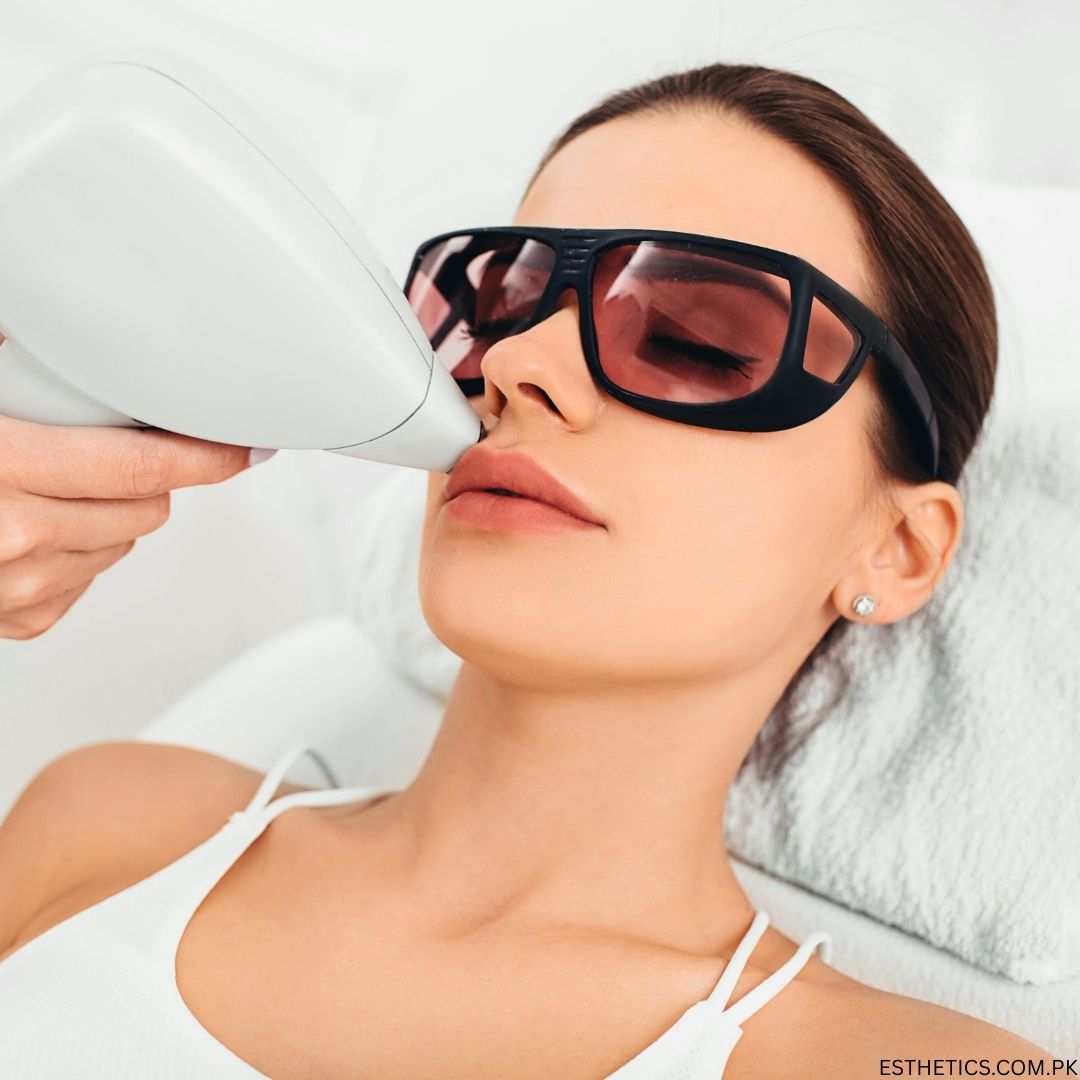
Introduction
Unwanted body hair is one of the most common concerns for both men and women. Shaving, waxing, or threading can be time-consuming, painful, and temporary. This is why laser hair removal has become the most trusted and long-lasting solution for smooth, hair-free skin.
If you live in Bahria Town Phase 8 Rawalpindi, you no longer need to travel far to get world-class laser treatments. With advanced machines, expert dermatologists, and affordable packages, laser hair removal is now available right in your neighborhood.
In this guide, we’ll explore the benefits, procedure, estimated prices for different body areas, and why Aesthedoc Clinic in Bahria Town Phase 8 Rawalpindi is the right choice for your treatment.
What is Laser Hair Removal?
Laser hair removal is a medical procedure that uses concentrated light beams to target and destroy hair follicles. The pigment (melanin) in the hair absorbs the light, which damages the follicle and prevents future growth.
It’s a safe, FDA-approved, and effective treatment that reduces up to 90% of hair permanently after multiple sessions.
Benefits of Laser Hair Removal in Bahria Town Phase 8 Rawalpindi
Choosing laser over traditional methods has countless advantages:
- ✅ Long-Lasting Results – Smooth skin for months and years with maintenance sessions.
- ✅ Cost-Effective – No need to spend money repeatedly on waxing or razors.
- ✅ Quick Sessions – Small areas take just a few minutes.
- ✅ Safe & Painless – Modern machines offer cooling technology for a comfortable experience.
- ✅ No Ingrown Hairs – Unlike waxing or shaving, laser prevents irritation and bumps.
Laser Hair Removal Prices in Bahria Town Phase 8 Rawalpindi
The cost of laser hair removal depends on the size of the treatment area, number of sessions, and the clinic’s expertise. Below is an estimated price table for popular treatment areas in Bahria Town Phase 8 Rawalpindi:
| Body Area | Estimated Price Per Session (PKR) | Package (6 Sessions) |
|---|---|---|
| Upper Lip | 2,500 – 3,500 | 12,000 – 15,000 |
| Chin | 3,000 – 4,000 | 15,000 – 18,000 |
| Full Face | 8,000 – 10,000 | 40,000 – 50,000 |
| Underarms | 4,000 – 5,000 | 20,000 – 25,000 |
| Full Arms | 10,000 – 12,000 | 50,000 – 60,000 |
| Full Legs | 15,000 – 18,000 | 75,000 – 90,000 |
| Bikini Line | 7,000 – 9,000 | 35,000 – 45,000 |
| Chest (Men) | 12,000 – 15,000 | 60,000 – 75,000 |
| Back (Men) | 15,000 – 18,000 | 75,000 – 90,000 |
| Full Body (Men/Women) | 35,000 – 45,000 | 180,000 – 220,000 |
💡 Note: Prices may vary depending on hair type, skin tone, and machine technology used. A consultation with a dermatologist at Aesthedoc Clinic will provide exact cost details.
How Many Sessions Are Required?
Most clients require 6 to 8 sessions spaced 4 to 6 weeks apart for optimal results. Maintenance sessions may be needed once or twice a year to keep skin permanently smooth.
Why Choose Aesthedoc Clinic in Bahria Town Phase 8 Rawalpindi?
If you are searching for the best clinic for laser hair removal in Bahria Town Phase 8 Rawalpindi, Aesthedoc Clinic stands out for several reasons:
- Experienced Dermatologists & Aesthetic Physicians
- FDA-Approved Laser Machines with Cooling Technology
- Personalized Treatment Plans for each skin and hair type
- Hygienic & Comfortable Environment
- Affordable Packages & Discounts for multiple areas
With its professional team and modern technology, Aesthedoc Clinic ensures safe, effective, and lasting results for men and women.
Final Thoughts
Laser hair removal is more than a cosmetic treatment – it’s an investment in your confidence, comfort, and long-term savings. If you’re tired of waxing or shaving, it’s time to switch to the most reliable solution.
For laser hair removal in Bahria Town Phase 8 Rawalpindi, book your consultation at Aesthedoc Clinic today and take the first step toward smooth, hair-free skin.
📍 Visit us in Bahria Town Phase 8 Rawalpindi
📞 Contact Aesthedoc Clinic to schedule your appointment
Blog
Aesthetic Machines Supplier Pakistan
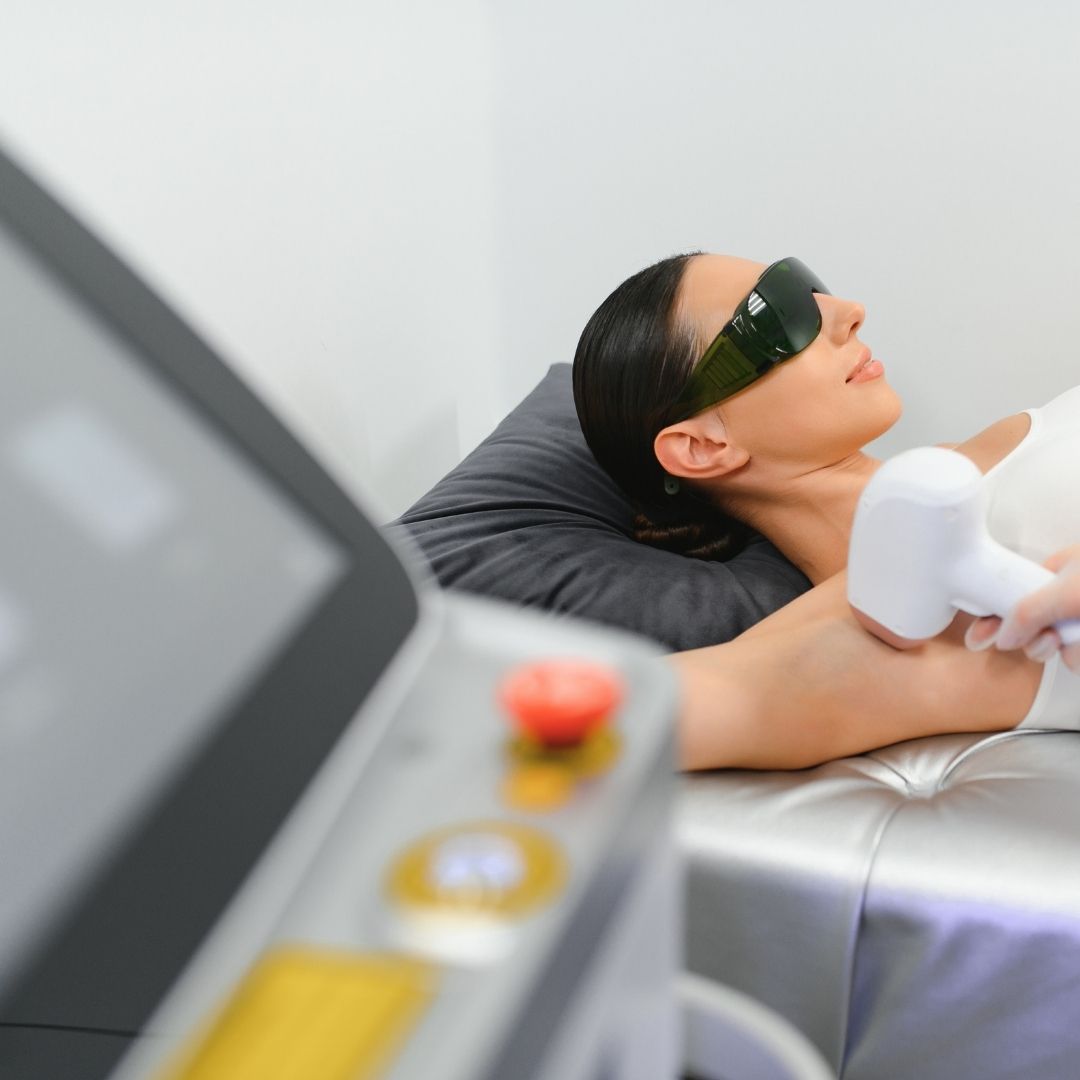
Introduction
In Pakistan, the field of aesthetic medicine has grown tremendously over the past decade. Patients are no longer seeking only injectables like Botox and fillers but are increasingly demanding non-invasive and minimally invasive machine-based treatments. From laser hair removal and HIFU facelifts to HydraFacial treatments, body contouring, CO₂ fractional lasers, and RF microneedling, the use of advanced aesthetic machines is now a cornerstone of modern dermatology and cosmetic practices.
For clinics, medspas, and dermatologists, the challenge is to find an authentic and trusted aesthetic machines supplier in Pakistan who can provide safe, FDA-approved, and clinically reliable systems. This is where Aesthedoc steps in as the most reliable partner.
At Aesthedoc Shop, you can buy a wide range of aesthetic devices and equipment including:
- Laser Hair Removal Machines
- HIFU Skin Tightening Machines
- HydraFacial & Aqua Peeling Systems
- CO₂ Fractional Lasers
- RF Microneedling Devices
- Cryolipolysis Fat Freezing Machines
- Body Contouring & EMSculpt Devices
- PRP Centrifuge Machines
- Skin Analysis & Diagnostic Systems
This article will give you a detailed overview of all the major aesthetic machines available in Pakistan, their uses, and why Aesthedoc should be your go-to supplier.
Why Choose Authentic Aesthetic Machines in Pakistan?
The aesthetic industry in Pakistan is highly competitive, and with growing patient awareness, clinics cannot compromise on the quality of their devices. Using low-quality or counterfeit machines poses serious risks:
- Unsafe procedures leading to burns, scarring, or treatment failure.
- Short device lifespan due to poor build quality.
- No warranty or after-sales service.
- Legal and reputational risks for clinics.
On the other hand, authentic and FDA/CE-certified devices provide:
- Consistent treatment results.
- Patient safety and satisfaction.
- Long-term ROI (Return on Investment) for clinics.
- Brand credibility.
Aesthedoc guarantees authentic machines sourced from verified manufacturers with proper handling, installation, and nationwide delivery.
Categories of Aesthetic Machines in Pakistan
Let’s explore the most in-demand aesthetic machines available in Pakistan and supplied by Aesthedoc.
1. Laser Hair Removal Machines in Pakistan
Laser hair removal is one of the most sought-after aesthetic procedures in Pakistan. A good laser hair removal machine supplier must provide systems that are safe for all skin types, especially South Asian tones.
Types of Laser Hair Removal Machines Available:
- Diode Laser (most popular in Pakistan)
- Alexandrite Laser (effective for lighter skin)
- Nd:YAG Laser (safe for darker tones)
Top Global Brands Used in Pakistan:
- Alma Soprano ICE / Titanium
- Candela GentleLase & GentleYAG
- Cynosure Elite+
- Lumenis LightSheer
Applications:
- Permanent hair reduction
- Suitable for face, arms, legs, underarms, bikini, and full body
👉 Buy authentic laser hair removal machines in Pakistan from Aesthedoc Shop.
2. HIFU (High-Intensity Focused Ultrasound) Machines in Pakistan
HIFU is one of the most effective non-surgical facelift technologies available today. It uses ultrasound energy to target deep skin layers, stimulating collagen and providing a natural lift.
Uses of HIFU Machines:
- Non-surgical facelift
- Jawline tightening
- Wrinkle reduction
- Neck and décolleté rejuvenation
Popular HIFU Systems:
- Ultraformer III
- Doublo Gold
- Ultraformer MPT
These machines are highly in demand in Islamabad, Lahore, Karachi, and Rawalpindi clinics.
3. HydraFacial & Aqua Peeling Machines in Pakistan
HydraFacial treatments are extremely popular among Pakistani clients for skin cleansing, hydration, and glow.
Benefits of HydraFacial Machines:
- Deep cleansing and exfoliation
- Blackhead and oil removal
- Hydration with serums
- Improved skin tone and texture
Popular Systems in Pakistan:
- Original HydraFacial MD®
- AquaSure H2
- Korean Aqua Peeling Devices
These machines are a must-have for dermatology clinics and beauty spas.
4. CO₂ Fractional Lasers in Pakistan
CO₂ lasers are considered the gold standard for skin resurfacing and scar treatment.
Applications of CO₂ Fractional Lasers:
- Acne scar treatment
- Wrinkle reduction
- Skin resurfacing and tightening
- Stretch mark reduction
Top CO₂ Laser Brands:
- Lutronic eCO2
- DEKA SmartXide
- Lumenis Ultrapulse
Clinics across Pakistan are using these devices for deep skin rejuvenation.
5. RF Microneedling Machines in Pakistan
Radiofrequency (RF) microneedling combines collagen induction therapy with energy-based tightening.
Benefits:
- Acne scar reduction
- Pore size minimization
- Skin tightening
- Stretch mark treatment
Popular RF Microneedling Devices:
- Morpheus8 (by InMode)
- Scarlet RF
- Secret RF
These devices are considered game-changers for acne scar and skin rejuvenation treatments.
6. Cryolipolysis / Fat Freezing Machines in Pakistan
Cryolipolysis, commonly known as fat freezing, is a non-invasive alternative to liposuction.
Uses of Cryolipolysis Machines:
- Double chin fat reduction
- Abdominal fat removal
- Thigh and arm contouring
Popular Devices:
- CoolSculpting® by Allergan
- Clatuu Alpha
- Ice-Shaping Fat Freezers
👉 Many weight loss clinics in Pakistan are investing in these devices.
7. Body Contouring & EMSculpt Devices in Pakistan
These devices combine high-intensity focused electromagnetic energy (HIFEM) to build muscle while reducing fat.
Applications:
- Muscle toning (abs, buttocks, arms)
- Fat burning
- Post-pregnancy body shaping
Popular Brands:
- EMSculpt Neo®
- TeslaFormer®
Clinics in Pakistan are increasingly offering non-surgical body shaping treatments with these machines.
8. PRP Centrifuge Machines in Pakistan
PRP (Platelet Rich Plasma) therapy is widely used for hair restoration, skin rejuvenation, and healing.
PRP Machines Available:
- Laboratory-grade centrifuge machines
- PRP kits for clinical use
They are essential for dermatologists offering PRP for hair loss and facial rejuvenation.
9. Skin Analysis & Diagnostic Systems
A professional skin analysis machine helps clinics:
- Diagnose skin conditions
- Plan treatments
- Track progress
Popular Devices:
- OBSERV 520x
- VISIA Skin Analysis
These systems are highly recommended for modern aesthetic clinics in Pakistan.
Why Buy Aesthetic Machines from Aesthedoc?
When searching for the best aesthetic machines supplier in Pakistan, here’s why Aesthedoc stands out:
- Authentic, original machines only (no fakes or cheap replicas)
- Wide range of devices (lasers, HIFU, HydraFacial, body contouring)
- Competitive pricing tailored for Pakistan’s market
- Proper warranty and after-sales support
- Nationwide delivery with safe installation
- Easy online purchase
Conclusion
The aesthetic industry in Pakistan is expanding rapidly, and patients are demanding non-surgical, advanced, and machine-based treatments. For clinics and practitioners, investing in authentic machines is not just about technology – it is about patient safety, credibility, and long-term success.
Whether you are looking for laser hair removal machines, HIFU devices, HydraFacial systems, CO₂ lasers, body contouring machines, RF microneedling, cryolipolysis, or PRP equipment, the most trusted partner is Aesthedoc.
👉 Visit Aesthedoc today to explore and order authentic aesthetic machines in Pakistan.
-

 Aesthetics Medicine2 years ago
Aesthetics Medicine2 years agoFat Dissolving Injections
-

 Aesthetics Medicine2 years ago
Aesthetics Medicine2 years agoAesthetic Medicine Supplier Pakistan
-
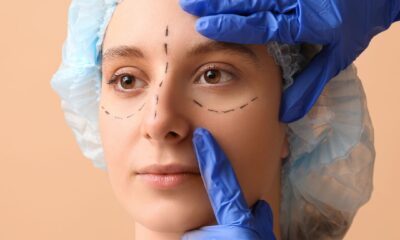
 Aesthetics2 years ago
Aesthetics2 years agoFace Thread Lift
-

 Aesthetics2 years ago
Aesthetics2 years agoEnlargement Male Breast Tissues in Blue Area, Gynecomastia Self-Care
-

 Aesthetics2 years ago
Aesthetics2 years agoFat Dissolving Injections Price in Pakistan
-

 Blog3 years ago
Blog3 years agoTop 5 Fat Dissolving Injections
-

 Blog3 years ago
Blog3 years agoFat Loss Injections Benefits Risk Side Effects
-

 Blog3 years ago
Blog3 years agoFat Dissolving Injections Reality Truth and Fact?


